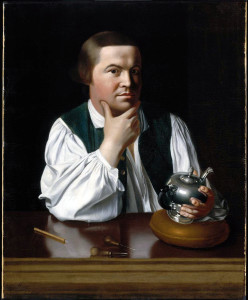What was the route of what historians consider the most infamous midnight ride in the Revolutionary War?
 April 18, 1775 — Today in history, Paul Revere rode from Charleston to Lexington warning the “regulars are coming!”
April 18, 1775 — Today in history, Paul Revere rode from Charleston to Lexington warning the “regulars are coming!”
Revere was sent by Dr. Joseph Warren, who instructed him to ride to Lexington, Massachusetts, to warn Samuel Adams and John Hancock that British troops were marching to arrest them.
After being rowed across the Charles River to Charlestown by two associates, Revere borrowed a horse from his friend Deacon John Larkin.
While in Charlestown, he verified that the local “Sons of Liberty” committee had seen his pre-arranged signals the previous weekend, as he was afraid that he might be prevented from leaving Boston.
Sources
Words of Wisdom
1. One lantern hung in the bell-tower of Christ Church in Boston indicated troops would be marching by land out Boston Neck.
2. Two lanterns indicated troops would row by sea across the Charles River to Cambridge.
On the way to Lexington, Revere alarmed the country-side, stopping at each house, and arrived in Lexington around midnight. As he approached the house where Adams and Hancock were staying, a sentry asked that he not make so much noise.
Noise! cried Revere, You'll have noise enough before long. The regulars are coming out!
After delivering his message, Revere was joined by a second rider, William Dawes, who had been sent on the same errand by a different route. Deciding on their own to continue on to Concord, Massachusetts, where weapons and supplies were hidden, Revere and Dawes were joined by a third rider, Dr. Samuel Prescott.
Soon after, all three were arrested by a British patrol. Prescott escaped almost immediately, and Dawes soon after. Revere was held for some time and then released. Left without a horse, Revere returned to Lexington in time to witness part of the battle on the Lexington Green.




